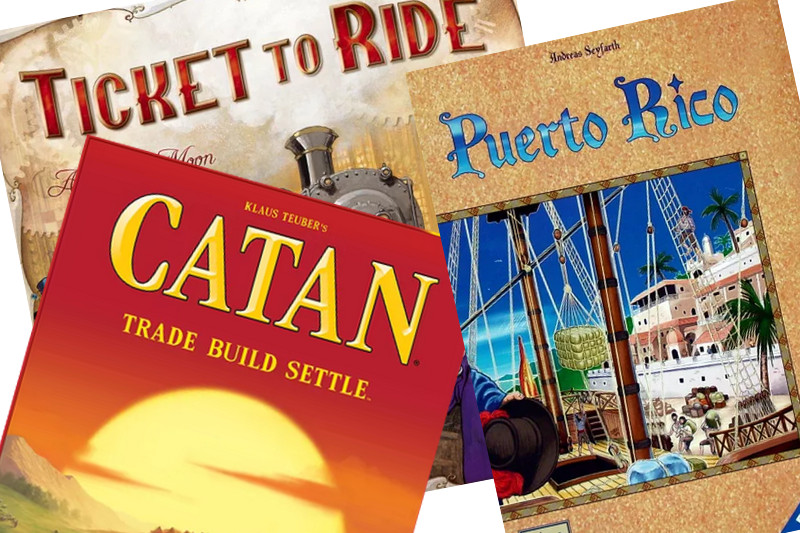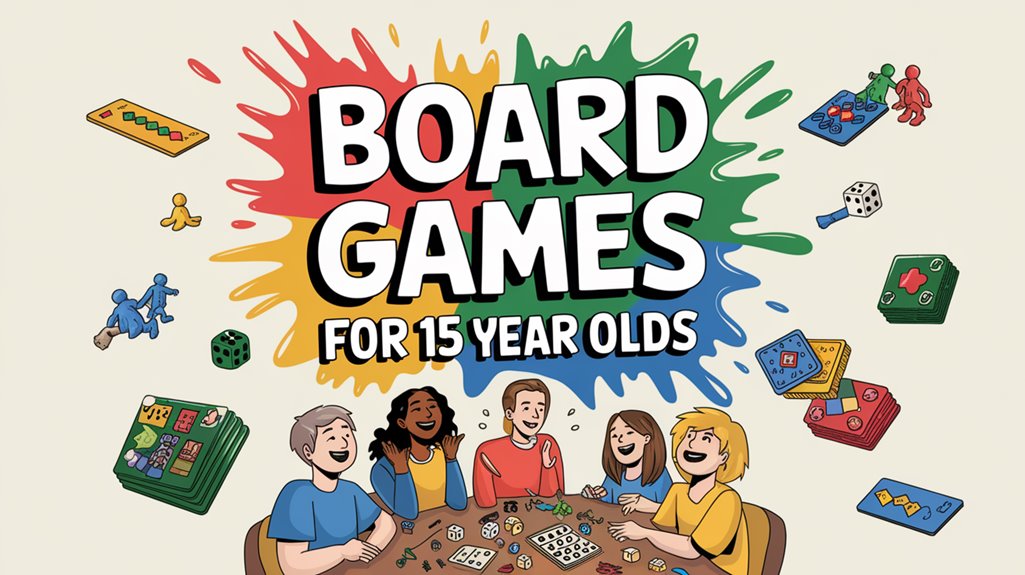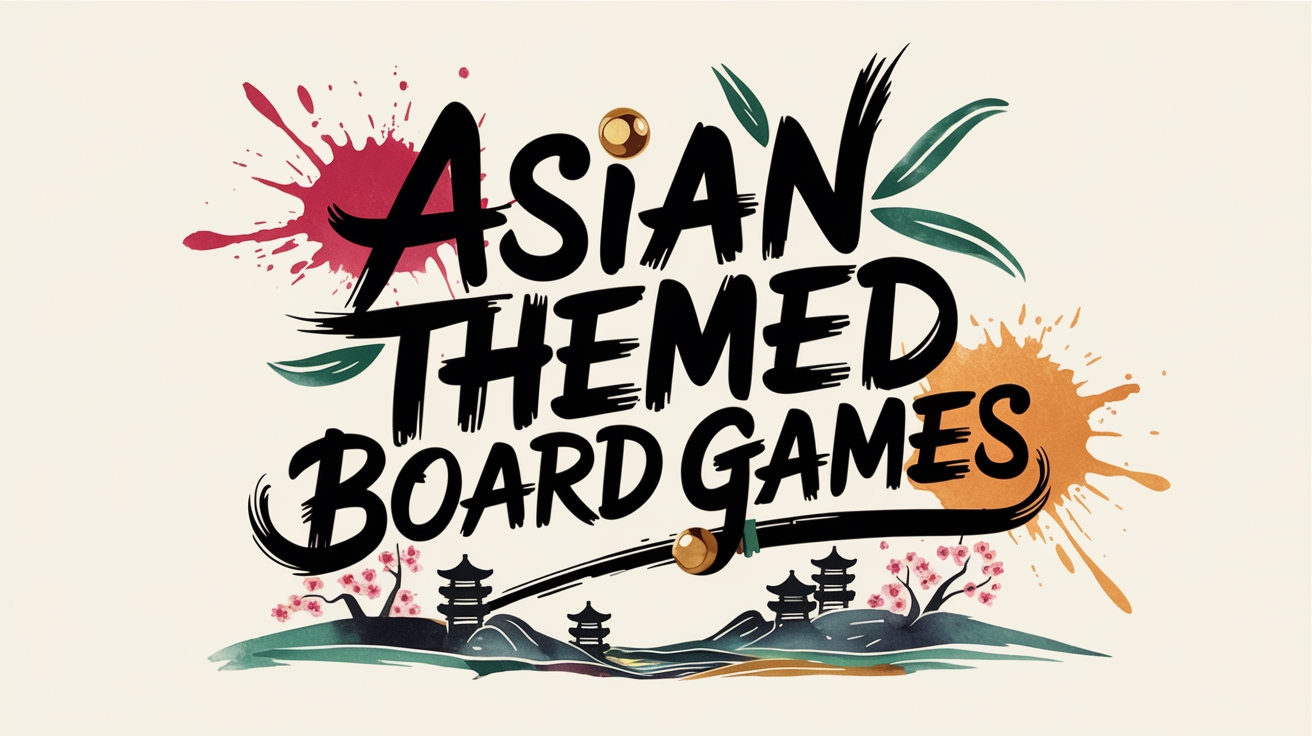Board games have undergone a remarkable transformation since the emergence of Eurogames in post-war Germany, shifting from simple roll-and-move mechanics to sophisticated systems of strategy and resource management. Unlike their American counterparts, which often emphasize direct conflict and chance, Eurogames prioritize careful planning, multiple paths to victory, and meaningful player choices that ripple throughout each session. This distinct design philosophy has revolutionized modern tabletop gaming, inspiring countless titles that challenge players’ intellects while nurturing social interaction. To understand the impact of this gaming revolution, we must first investigate the unique characteristics that define the Eurogame genre.
Key Takeaways
- Eurogames emphasize strategy and resource management over luck, featuring minimal direct conflict between players and multiple paths to victory.
- Popular examples include Settlers of Catan, Carcassonne, and Puerto Rico, which established core mechanics still used in modern designs.
- Common mechanics include worker placement, territory control, and resource trading, focusing on economic themes rather than combat.
- These games emerged from post-World War II Germany, seeking to create peaceful entertainment alternatives with family-friendly themes.
- Players typically compete through victory points rather than elimination, managing limited resources while making strategic decisions throughout gameplay.
What makes an Eurogame?
While modern board games come in many varieties, Eurogames are distinguished by several key characteristics that set them apart from traditional American-style games. These games typically emphasize strategy and planning over luck, with minimal direct player conflict and rare player elimination.
Eurogames feature mechanics that keep all players engaged throughout the game, often using worker placement, resource management, or tile-laying systems. Players usually compete indirectly by gathering resources, building structures, or scoring points rather than attacking each other directly. Victory points, rather than elimination, determine the winner.
A hallmark of Eurogames is their economic focus, with players managing limited resources and making strategic trades. The games often have historical or cultural themes, though these themes may be lighter than in American-style games. Components typically include wooden pieces, tiles, and cards rather than plastic miniatures.
Another defining feature is the length, usually lasting 60-120 minutes with clear end-game conditions. Player interaction occurs through trading, blocking actions, or competing for limited resources, creating tension without direct conflict. Rules tend to be more complex than family games but are typically well-structured and logical.
Origins and Historical Development
These defining characteristics of Eurogames emerged from a rich history of game development in post-World War II Germany. As families sought peaceful entertainment during reconstruction, German publishers began creating games that emphasized strategy over conflict. The Spiel des Jahres (Game of the Year) award, established in 1978, helped standardize and promote these design principles.
During the 1980s and 1990s, several influential designers shaped the evolution of Eurogames, creating titles that would define the genre. Notable developments include resource management mechanics, indirect player competition, and elegant rule systems that minimize randomness.
| Period | Key Development | Notable Games |
|---|---|---|
| 1950s-1960s | Family-oriented games emerge | RISK, Monopoly alternatives |
| 1970s-1980s | Strategy focus increases | Civilization, 1830 |
| 1990s | Designer games bloom | Settlers of Catan, El Grande |
| 2000s-Present | Global mainstream success | Carcassonne, Ticket to Ride |
The movement gained international recognition with the release of Klaus Teuber’s Settlers of Catan in 1995, marking a turning point in board game design and commercial success. This watershed moment helped establish European-style board games as a distinct category in the global gaming market.
Essential Game Mechanics
Worker placement and territory control represent two fundamental mechanics that define many successful Eurogames. In worker placement systems, players strategically assign limited resources or worker tokens to different board spaces, creating engaging decision-making opportunities while managing scarcity and competition for valuable actions. Territory control mechanics, commonly implemented through area majority or influence spreading, allow players to compete for spatial dominance on the game board, often through careful positioning of pieces and tactical resource management.
Worker Placement Systems
A cornerstone mechanic in many eurogames, worker placement systems require players to strategically assign limited resources, typically in the form of worker tokens or meeples, to various action spaces on the game board. Players must carefully consider their options, as each placement both secures an action for themselves and blocks that space from other players, creating an environment of competition and tactical decision-making.
These systems often incorporate elements of scarcity and timing, where early-round choices can significantly impact later opportunities. Popular games like Agricola, Lords of Waterdeep, and Caylus showcase how worker placement mechanics can drive meaningful player interaction and strategic depth. The system typically operates on a round-by-round basis, with workers returning to their owners at the end of each round.
Many worker placement games include additional layers of complexity, such as worker specialization, variable action spaces, or resource conversion chains. These elements improve the depth of decision-making while maintaining the core tension of resource allocation. The mechanic effectively combines strategic planning with adaptive tactical choices, making it a fundamental aspect of modern eurogame design.
Territory Control Mechanics
Territory control mechanics represent a fundamental strategic element in eurogames, where players compete to establish and maintain dominance over specific regions of the game board through careful placement of pieces, resource management, and tactical maneuvering. Players must balance expansion with defense, considering both immediate territorial gains and long-term position sustainability.
| Control Type | Key Features | Common Examples |
|---|---|---|
| Area Majority | Most pieces in region wins | El Grande, Small World |
| Direct Control | Exclusive occupation required | Terra Mystica, Catan |
| Influence Spread | Adjacent zone expansion | Tigris & Euphrates |
The implementation of territory control varies across different eurogames, with some focusing on military strength while others emphasize economic or cultural influence. Success often depends on timing, as players must decide when to contest valuable territories and when to consolidate existing holdings. Many games incorporate scoring mechanisms that reward both immediate area control and sustained presence over multiple rounds, creating tension between aggressive expansion and defensive positioning. These mechanics frequently interact with other systems, such as resource generation or victory point accumulation, adding depth to strategic decision-making.
Player Interaction Styles
Eurogames feature distinct styles of player interaction, primarily through direct competition, indirect competition, and cooperative mechanisms. Direct competition involves players directly confronting or blocking each other’s actions, while indirect competition focuses on parallel play where players compete without direct interference. Cooperative play mechanisms, increasingly common in modern Eurogames, encourage players to work together against the game system itself, often while managing individual goals within the shared objective framework.
Direct vs Indirect Competition
Player interaction in Eurogame design typically falls into two major categories: direct competition and indirect competition. In direct competition, players actively interfere with each other’s plans through actions like blocking spaces, stealing resources, or engaging in conflict. Games like Catan demonstrate this through robber placement and settlement blocking, creating immediate tension between players.
Indirect competition takes a subtler approach, where players compete without directly attacking or hindering others. This style often involves racing for limited resources, completing objectives first, or building more efficient systems than opponents. Games like Wingspan exemplify this approach, as players focus on building their own tableau while competing for shared resources and goal cards. Many modern Eurogames favor indirect competition to reduce player conflict and maintain positive gaming experiences.
The choice between these interaction styles significantly impacts game atmosphere and player engagement. Direct competition often creates more dramatic moments and clear player confrontation, while indirect competition allows for more strategic planning and reduced negative feelings. Some games successfully blend both styles, offering players multiple paths to victory while maintaining mechanical balance.
Cooperative Play Mechanisms
Cooperative mechanisms represent a distinct departure from traditional competitive board game design, offering players the opportunity to work together against shared challenges or game-driven obstacles. In Eurogames, these mechanisms promote collaboration through shared resources, collective decision-making, and synchronized actions against automated game systems.
Common cooperative elements found in Eurogames include:
- Shared threat escalation, where players must collectively manage growing challenges before they overwhelm the group
- Role-based specialization, allowing each player to contribute unique abilities to the team’s success
- Information sharing mechanics, where players must coordinate their knowledge to solve complex puzzles or overcome obstacles
These cooperative mechanisms often incorporate elements that prevent single-player dominance, known as “quarterbacking,” through mechanics like hidden information or time constraints. Game designers implement these features to guarantee meaningful participation from all players while maintaining engagement throughout the gameplay experience. Modern Eurogames frequently blend cooperative and competitive elements, creating hybrid experiences where players must balance individual goals with group survival. This approach adds strategic depth while preserving the social dynamics that make cooperative play engaging.
Classic Eurogame Titles
Several iconic titles from the 1990s and early 2000s helped establish the foundations of modern Eurogames and continue to influence game design today. Games like Catan, Carcassonne, and Puerto Rico introduced mechanics that would become hallmarks of the genre, including resource management, tile placement, and worker placement strategies.
| Game Title | Release Year | Key Mechanic |
|---|---|---|
| Catan | 1995 | Resource Trading |
| Carcassonne | 2000 | Tile Placement |
| Puerto Rico | 2002 | Role Selection |
| El Grande | 1995 | Area Control |
| Tigris & Euphrates | 1997 | Tile Placement |

These foundational games demonstrated that complex strategic decisions could be presented through elegant rule sets, setting them apart from traditional American-style games. Catan revolutionized the industry by emphasizing player interaction through trading, while Carcassonne showed how simple tile-laying mechanics could create deep gameplay. Puerto Rico introduced role selection mechanics that influenced countless subsequent designs, while El Grande and Tigris & Euphrates established sophisticated area control systems. These titles remain relevant today, having sold millions of copies worldwide and spawning numerous expansions and variations.
Components and Production Values
Building on the success of classic Eurogames, modern titles in the genre have set high standards for component quality and production values. Publishers now invest significantly in durable materials, precise manufacturing, and artistic design to create games that are both functional and aesthetically pleasing. These improvements have helped establish Eurogames as premium tabletop products, distinguishing them from mass-market board games.
Component quality extends beyond mere durability, encompassing thoughtful design choices that improve gameplay experience. Modern Eurogames typically feature:
- Custom-molded plastic pieces specific to each game’s theme, replacing generic wooden tokens
- Thick cardboard tiles and boards with linen finish for improved tactile feel and durability
- High-quality card stock with protective coating to prevent wear from repeated shuffling
These production values reflect the maturation of the Eurogame market, where consumers expect excellence in both mechanics and materials. Publishers like Hans im Glück, Queen Games, and Repos Production have established manufacturing standards that balance cost efficiency with premium quality. This attention to physical components supports the complex gameplay mechanisms typical of Eurogames while ensuring long-term durability for repeated play sessions.
Strategy Vs Luck
A defining characteristic of Eurogames is their emphasis on strategic decision-making over luck-based elements. While traditional American-style games often rely heavily on dice rolls and card draws, Eurogames typically minimize random factors in favor of player choices and careful planning.
| Game Element | Strategy-Based | Luck-Based |
|---|---|---|
| Resource Management | Planning supplies | Random resources |
| Player Interaction | Calculated trades | Chance encounters |
| Victory Conditions | Multiple paths | Single random path |
| Game Progress | Controlled timing | Dice-determined |
Players in Eurogames maintain greater control over their destiny through mechanisms like worker placement, resource conversion, and action selection. These games often feature multiple paths to victory, allowing players to adapt their strategies based on other players’ choices rather than random events. While some luck elements may exist, they typically serve to add variety to the game setup or create minor tactical adjustments rather than determining outcomes.
This strategic focus appeals to players who prefer games where skill development and strategic thinking lead to improvement over time, rather than success being determined by fortunate rolls or draws.
Modern Design Influences
The strategic foundations of Eurogames have shaped modern board game design across all genres. This influence extends beyond traditional European markets, affecting game development worldwide through innovative mechanics and thoughtful player interaction systems. Contemporary designers frequently draw from Eurogame principles when creating new titles, incorporating resource management and strategic planning elements that have become hallmarks of the genre.
Modern board game design has adopted several key elements from Eurogames:
- Worker placement mechanisms that emphasize strategic choices and resource allocation
- Point-scoring systems that reward multiple paths to victory rather than direct conflict
- Modular board designs that improve replayability and strategic depth
The impact of Eurogame design principles continues to evolve, with designers mixing traditional elements with new concepts. Resource management systems have become more sophisticated, while maintaining accessibility for players new to the hobby. The focus on strategic depth without excessive complexity has influenced digital game design as well, with many video games incorporating similar decision-making structures. This cross-pollination of ideas has led to hybrid designs that combine the best aspects of different gaming traditions, creating more engaging experiences for players worldwide.
Getting Started With Eurogames
Starting your journey into Eurogames can feel less intimidating by choosing gateway titles that introduce core mechanics gradually. Popular entry points include Ticket to Ride, which teaches route building and set collection, and Carcassonne, which demonstrates tile placement and territory control. These games offer straightforward rules while maintaining strategic depth.
Before purchasing your first Eurogame, consider watching gameplay videos or joining local gaming groups to learn mechanics firsthand. Many game stores host demo nights where experienced players teach newcomers, providing practical experience with different game styles. Starting with shorter games, typically lasting 30-60 minutes, allows players to understand basic concepts without committing to lengthy sessions.
Key factors to consider when selecting introductory Eurogames include player count flexibility, setup time, and rule complexity. Games like Pandemic and Stone Age offer cooperative and competitive experiences respectively, while teaching resource management and strategic planning. Focus on titles with clear rulebooks and established player communities, as these provide reliable support for questions during initial plays. Remember that mastering simpler games builds a foundation for understanding more complex titles later.


